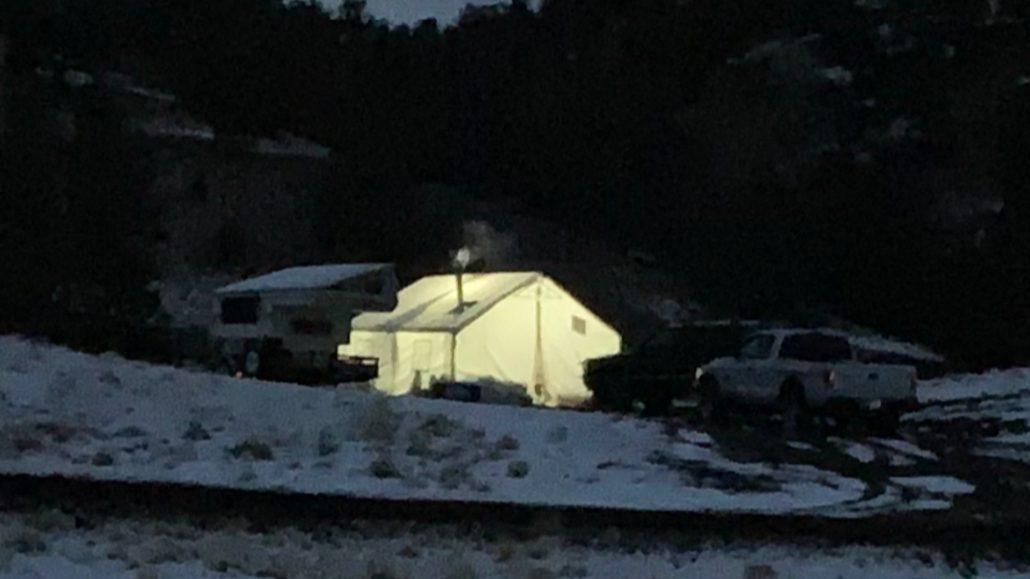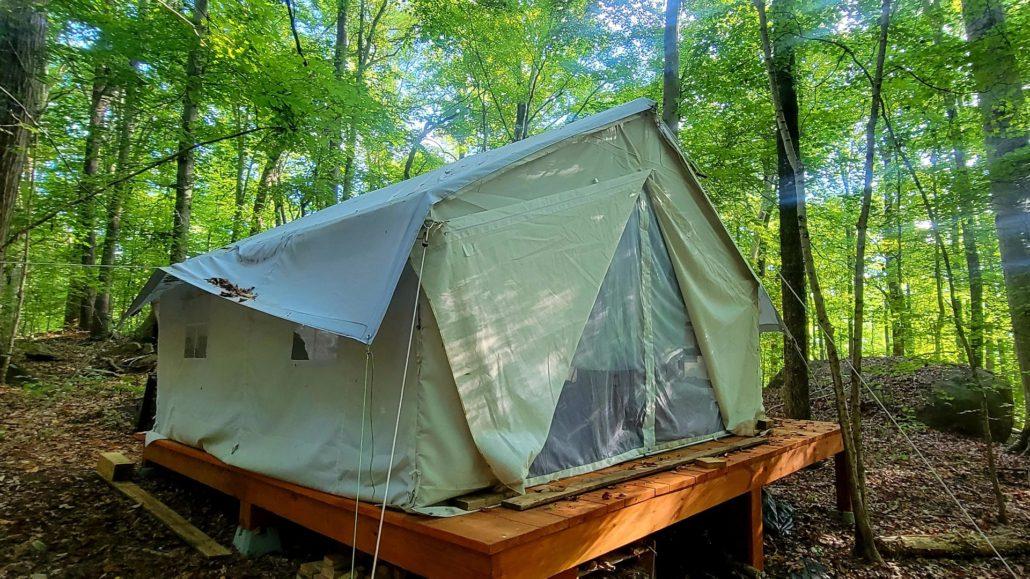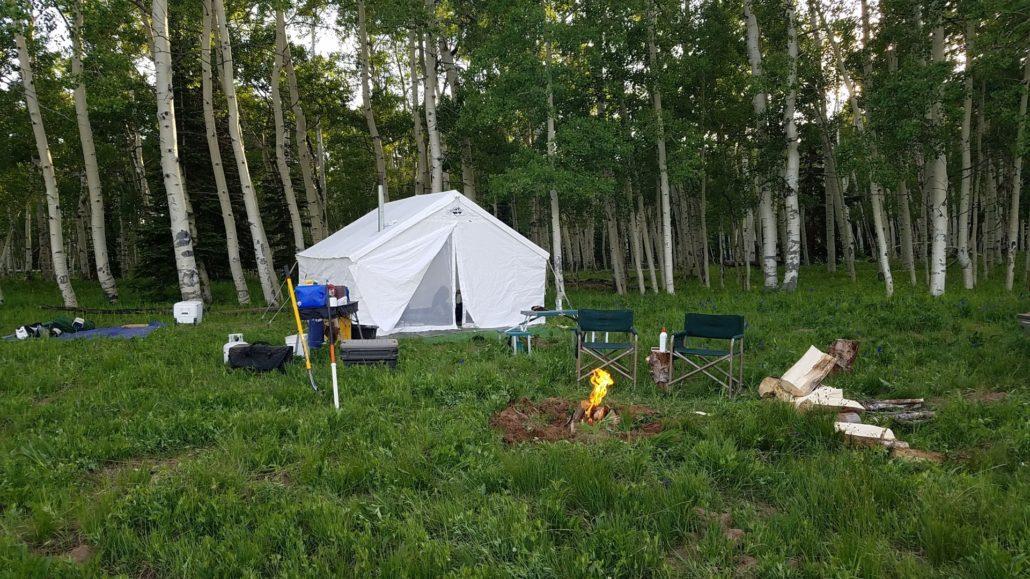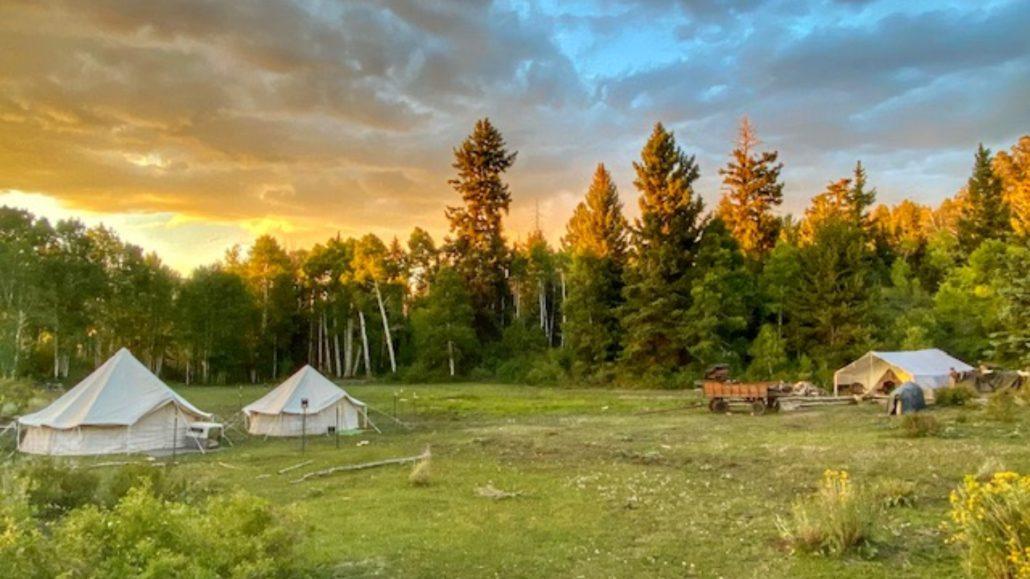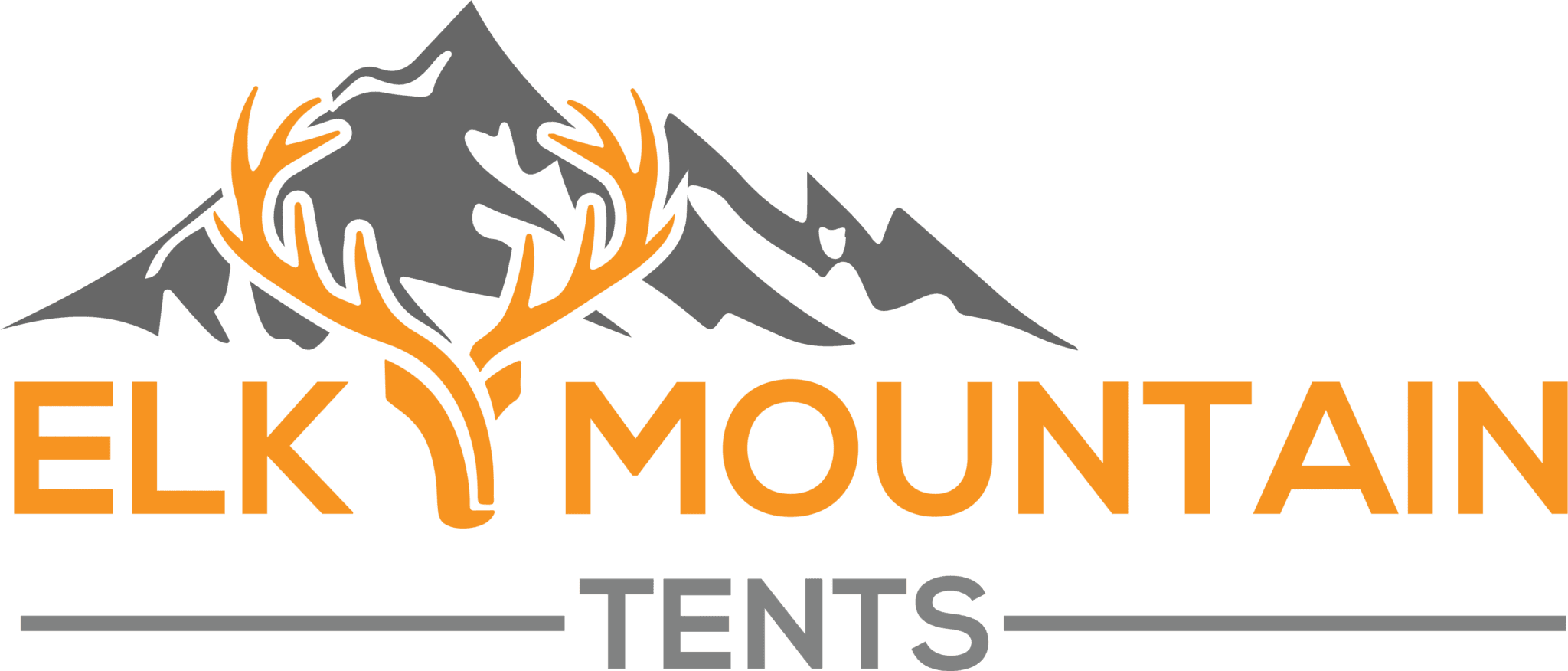Canvas Wall Tents with Floors: A Guide
If you’re looking for a rugged, durable, and spacious shelter for camping, hunting, or outdoor events, canvas wall tents with are an excellent choice. These tents are made from heavy-duty canvas fabric, often treated for water and mildew resistance and can keep you dry and comfortable.
However, what about floors? What kinds are there and should you get one? In this article, we’ll explore the benefits and drawbacks of canvas wall tents with floors, what to look for when buying one, and a reputable company that specializes in them.
Kinds of Wall Tent Floors
Basically, there are three kinds of floors for wall tents, and each has its own unique aspects to consider:
Sewn-in Floors: Sewn-in floors are quite literally a part of the tent. You can’t separate them. Hot take – they are great for keeping out small critters like mice but can make setup a chore.
Tie-in Floors: These have most of the same benefits of a sewn-in floor but with some opportunity for small critters as there will inevitably be gaps between the ties.
Place-Down Floors: For most people this just means tarps. Grab what you have and lay it down. This is the cheapest option and still worth considering.
We will touch on each of these more as we go on below
Benefits of Canvas Wall Tents with Floors
Let’s go ahead and assume you already know the advantages of a canvas tent: the spaciousness, durability, versatility, aesthetics, etc. Instead, let’s talk about the advantages of having a floor.
- Cleanliness: You know the best way to keep mud off your feet after you take your shoes off? Don’t stand in mudd. Without a floor, the base of your tent IS the ground. Is the ground muddy today? Is the ground dirty today? Adding a floor gives you, well, a floor!
- Moisture: You’ve waterproofed your tent. Great! Did you waterproof the ground? You can think of having a floor like having a vapor barrior underneath your house. It’s the best way to keep moisure out, which will help make your tent last as long as possible.
- Critters: Did you put your tent on top of a snake hole? Is your cot sitting on top of an ant nest? Any protection is better than no protection. A sewn-in floor provides the most protection from critters because there is no hole from them to climb through but many find that it isn’t worth the trouble.
- Protection: Canvas tents start at around $800 for the most basic model. If you are going to spend that much on a tent you should go just that little bit further to protecting it and your gear inside.
Which kind of Floor to get
It’s pretty simple. If you don’t have the money to get something fancy, just put down a tarp. You can get a cheap one for $20 and use it for a season or two, or get a fancy tarp for $60 and try to take care of it. Almost all of the advantages of other kinds of floors can be yours for less. Not a bad option.
A sewn-in floor, is usually pretty expensive. The material is usually very expensive and you’re paying for the extra labor. The biggest advantage is that you can enjoy your space without ever needing to think about mice. However, whether a sewn-in floor is a good idea or not largely depends on what your frame situation is. Assembling an internal frame from inside a tent with a sewn-in floor is a pain. It is not worth the effort. You will be enviously eyeing the tents of the other guys who assemble their frame and just slip their canvas right over the top and do a quick tie-down. However, if you’re using an external frame system, this is arguably the best setup with one more challenge: you can’t remove your floor to clean it. You will have to assemble your tent and its frame anytime you want to clean the floor. Other options allow you to easily remove the floor for cleaning. Don’t forget that the dirtiest part of your tent will always be the floor.
And what about a tie-in floor. These are usually kind of expensive as well because you’re getting more than a tarp. These are made out of sturdy materials designed to be walked on. This is the best option if you are using an internal frame. You get most of the benefits of a sewn-in floor without all the hassle.
What to Look for When Buying a Canvas Wall Tent with Floor
There’s a lot to consider when buying a tent with a floor, but hopefully the explanation above will help with deciding which floor to get if you get one at all. So, the information below is more general about canvas tent shopping in general.
- Size: Canvas wall tents with floors come in various sizes, ranging from small (8’x8′) to large (16’x24′ or more). The size of the tent you choose will depend on your needs, the number of people or equipment you plan to accommodate, and the space available for setup. Keep in mind that a larger tent may provide more comfort and convenience, but it also requires more effort and time to set up and take down.
- Material: The quality and type of canvas used for the tent can affect its durability, water resistance, and breathability. Look for tents made of high-quality, heavy-duty canvas. If you are getting cotton canvas, it must be treated with waterproofing and mold inhibitors. Otherwise, you can go with polyester which requires no such treatments and can be slightly lighter and stronger for the same price. You will want to pay attention to thickness as well. This is usually explained as “weight.” Canvas is listed by its oz weight per square yard. 8 oz is considered sub-standard, 10 oz is on the low end of standard, 12 oz is the higher end of standard, and 14-16 oz is considered very heavy duty. Of course, how much something weighs doesn’t directly correlate to strength but it is a good starting point. You should ask the manufacturer for the break and tear strength of their canvas. For example, the synthetic canvas used by Elk Mountain Tents is an 11 oz canvas with a breaking strength of 449 lbs (warp direction) and 382 lbs (fill direction), making it significantly tougher than traditional canvas which has a breaking strength of 382 (warp) and 241 (fill) for 12 oz canvas and about 210 (warp) and 140 (fill) for 10 oz canvas. The tear strength is 67 lbs (warp) and 40 lbs (fill); this is roughly double that of the Sunforger canvas material used by other tent companies.
- Floor: The floor of a canvas wall tent can be made of different materials, such as vinyl, polyethylene, or canvas. Look for a floor that is sturdy, waterproof, and easy to clean. Some floors may also have built-in grommets or flaps for anchoring or sealing the tent. The biggest question will be whether it is a sewn-in or tie-in floor.
- Windows and doors: The number, size, and type of windows and doors on a canvas wall tent can affect its ventilation, light, and access. Look for tents with adjustable windows that can be opened or closed depending on the weather and the privacy needs. If you are going to bother with windows (and you should) then be sure to pay the extra to have them screened. You may also want to consider tents with screened doors or zippered flaps for easy entry and exit.
- Stove jack: If you plan to use a stove or heater inside your canvas wall tent, you need a stove jack or a hole in the tent’s roof for the chimney. Look for tents with stove jacks that are reinforced and adjustable for different stove sizes and heights. You may also want to consider tents with heat-resistant material around the stove jack to prevent fire hazards. This can either be built into the tent, or you can treat the canvas itself for fire, or you can purchase a stove mat and heat shields.
- Accessories: Canvas wall tents with floors can be customized and enhanced with various accessories, such as awnings and tent stoves. Look for tents that have compatible accessories that fit your needs and budget. You may also want to consider the weight and bulk of the accessories and how they affect the overall setup and transport.
- Shipping: You wouldn’t think this is an issue since it has little to do with the tent itself but many tent companies are 2-3 months behind on their custom orders. Some have a waitlist that can you out almost a year. Others keep certain models ready to be shipped out the next day.
Elk Mountain Tents: A Reputable Company for Canvas Wall Tents with Floors
If you’re looking for a reliable and experienced company that specializes in canvas wall tents with floors, Elk Mountain Tents is an excellent choice. Elk Mountain Tents is a family-owned and operated business based in Idaho. The company prides itself on using high-quality materials, skilled craftsmanship, and personalized customer service to create tents that are comfortable, durable, and versatile.
The biggest selling points of Elk Mountain Tents are these: They use an advanced, modern canvas material that is slightly stronger and lighter than cotton canvas and requires no expensive water, sun, or mold treatments. They include more features in their base models, which all include screened windows, a stove jack, and an angle kit. Their prices are unbeatable when you consider all the features you want. They can offer this because they don’t have to pay to maintain a physical store front. They pass the savings on to you. And they can have it shipped the next day.
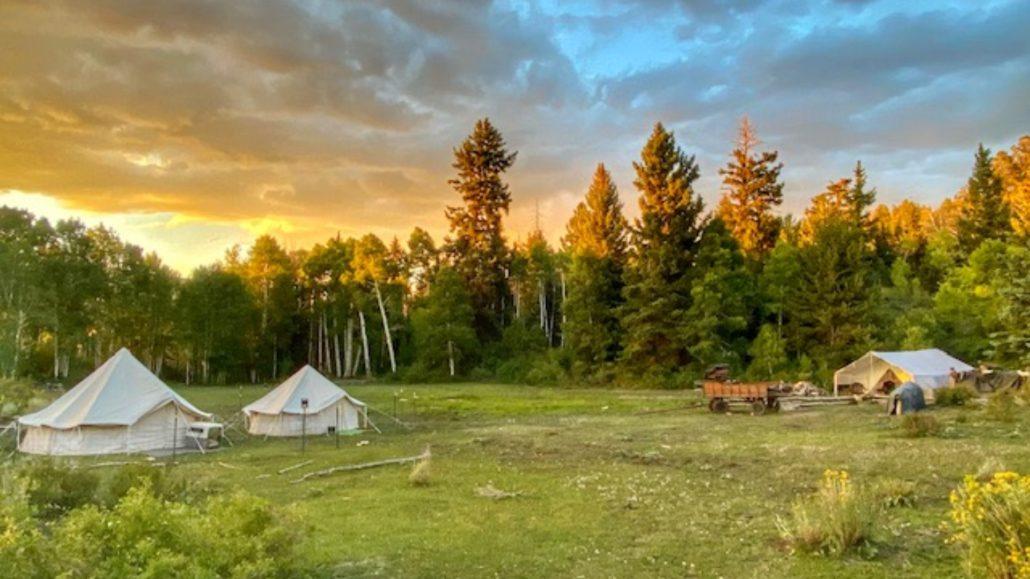
FAQs about Canvas Wall Tents with Floors
Q: Are canvas wall tents with floors suitable for all seasons?
A: Yes, canvas wall tents with floors can be used in all seasons, as long as they are properly ventilated and insulated. Canvas is a breathable material that allows air circulation and prevents condensation, which can be a problem in humid or cold weather. However, you may need to use a stove or heater inside the tent to stay warm in freezing temperatures.
Q: How do you set up a canvas wall tent with a floor?
A: The setup process of a canvas wall tent with a floor depends on which type of floor you’ve chosen. Tie in floors typically involve assembling the tent and then tying down the floor. Sewn-in floors are part of the tent and are a pain for tents with an internal frame.
Q: How do you clean and maintain a canvas wall tent with a floor?
A: To clean and maintain a canvas wall tent with a floor, you should follow the manufacturer’s instructions and use mild soap and water. Avoid using harsh chemicals or abrasive tools that can damage the canvas or the floor. You should also store the tent in a dry and cool place and avoid folding or compressing it for long periods of time. A tie-in floor will be easier to clearn.
Conclusion
Canvas wall tents with floors are a popular and practical choice for outdoor enthusiasts, hunters, campers, and glampers who value comfort, durability, and versatility. When choosing a canvas wall tent with a floor, you should consider the size, material, windows and doors, stove jack, and accessories that fit your needs and budget. Elk Mountain Tents is a reputable and experienced company that offers a wide range of canvas wall tents with floors and accessories that can enhance your outdoor experience.



